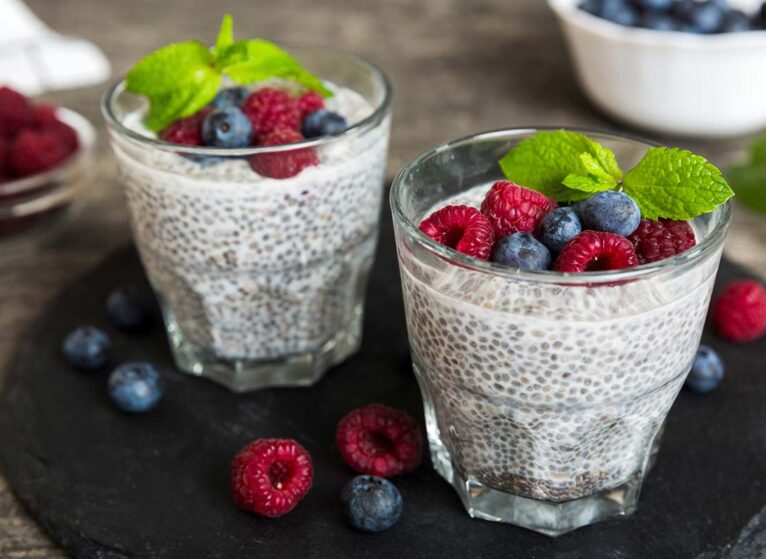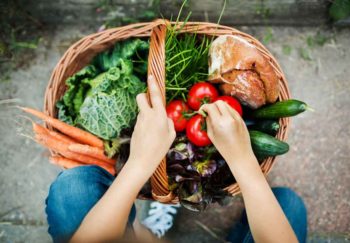Omega-3 has been a nutritional buzzword for years. The list of benefits for adding this fatty acid to your diet keeps growing. New research from UVA Health shows that omega-3s may help with pulmonary fibrosis. This lung scarring disease typically worsens with time. But enough omega-3s can slow the decline down.
The best sources of omega-3 are fish. Particularly fatty cold water fish. But if you’re like me, sardines, oysters, and mackerel aren’t on your usual grocery list. And while kids may chomp on a fish stick, herring is a much harder sell.
If you’re vegan, don’t like fish, or have other dietary restrictions, getting enough omega-3 rich foods can be a challenge.
So, why are omega-3s so important that we can’t just skip them? And which omega-3 foods can fit your personal taste, dietary restrictions, and budget?
What Is Omega 3 Good For?
Omega-3 fatty acids have a long (and growing) list of health benefits.
This good fat may lower the risk of:
- Heart disease
- Stroke-causing blood clots
- Breast cancer (and other cancers)
- Alzheimer’s disease and dementia
Omega-3s can also help with symptoms of:
- Lupus
- Rheumatoid arthritis
- Crohn’s disease
- Depression
- ADHD
- Asthma
There are also some overall health benefits. Omega-3s can help lower triglycerides and reduce inflammation.
Eating Right Doesn't Need to Be Complex
Our nutrition experts can help you make lasting dietary changes to improve your life and achieve your goals.
Types of Omega-3s
There are 3 types of Omega-3s. DHA and EPA have the most health benefits. These are almost exclusively found in fish.
ALA is found in plants. Given enough ALA, your body can turn some into EPA and DHA. But the process isn’t very efficient (some estimates are as high as 20%, most are closer to 9%). So, 10 grams of ALA equals about 1 gram of EPA or DHA.
How Much Omega 3 Do I Need?
The American Heart Association suggests getting 1.4 g of DHA and EPA (combined) daily. That doesn’t mean you have to eat 1.4 g every single day.
A weekly goal might be easier. 1.4 g per day equals about 10 g per week. That could look like 5 g on 2 days and 0 g the other 5 days. If you eat 2-3 meals rich in omega-3s per week, you’re good.
So, what about ALAs? Remember your body can convert 10 g of ALA to about 1-2 g of DHA and EPA. You might meet your weekly goal by eating 50 g of ALA and 5 g of DHA and EPA. A lot of the foods you eat on a daily basis, like spinach and broccoli, contain ALAs as well, and all of it adds up.
So, Where Can I Get Omega-3s?
While you can take supplements, most studies show omega-3 fatty acids you get from whole foods are better for you overall.
"If you do decide to go with supplements, make sure to look for the specific EPA and DHA content per capsule," says Katherine Basbaum, a clinical dietitian at UVA Health. "And look for a mention of enteric coating to avoid the fish burps."
Omega-3 Rich Foods
| Food | EPA + DHA Omega-3 | ALA Omega-3 |
|---|---|---|
| Mackerel (1 fillet, 6-8 ounces) | 2.5g | |
| Salmon (3 ounces) | 4.5g | |
| Herring (3 ounces) | 1.5g | |
| Trout (3 ounces) | .5g | |
| Light tuna (3 ounces) | .17g | |
| Chia seeds (1 ounce) | 5 grams | |
| Flaxseed (1 tbsp) | 2.35 grams | |
| Walnuts (1 cup) | 3.346 grams | |
| Canola Oil (1 tbsp) | 1.28 grams | |
| Edamame (1/2 cup) | .28 grams | |
| Algal oil (1 tbsp) | .5 grams |
Fish Rich in Omega 3
Eating fish is the easiest way to get your DHA and EPA omega-3s. The oilier and fishier, the better. If you’re a seafood lover, indulge! Light tuna, while a favorite of dieters, doesn’t have nearly the omega-3 content of salmon. In general, the more indulgent the fish feels, the better the omega-3 content.
Sardines and anchovies, frequently used as components in recipes, are also very high in omega-3s.
Omega-3s from Plants
If you’re vegan or just fish-averse, it’s time to get creative. Enough ALA omega-3 can offset a complete lack of DHA and EPA. But you’re most likely not going to get that without some meal planning.
Chia and flax seeds both offer high omega-3 content. And while a lot of people aren’t crazy about the taste of flaxseed, chia seeds boast of a “subtle taste.” From my experience, that means you can cover it up with just about anything. And each seed is so small you can add it to a variety of foods. Overnight oatmeal, yogurt, puddings, and many other foods are easy to add chia to for a major nutritional improvement.
Algal oil, an oil made from algae, is a plant-based source that contains DHA and EPA. While pure algal oil isn’t available currently, there are cooking oils that use algal oil to add omega-3s. While chugging oil is never healthy, regardless of nutritional content, changing up your cooking oil of choice can give you a small advantage here.
Fish Burp & Other Supplement Pitfalls
Supplements are tempting. Taking a single pill seems a lot easier than shopping for algal oil and sprinkling chia seeds on everything. And omega-3s are one of the most popular supplements for that reason.
But in over 70 trials, the results have all been the same. There’s no evidence that the supplement provides nearly the same benefits as the natural sources.
There are also some serious downsides.
In addition to the notorious “fish burps” you can also develop:
- Atrial fibrillation (A-Fib)
- Increased risk of bleeding
- Problems with existing prescriptions
It might seem weird that fish has all the health benefits and fish oil doesn’t. That’s because the omega-3s oxidize when we make fish into fish oil. That strips a lot of the nutritional benefit.
Getting Healthier With Better Fats
For decades, we heard we needed less fat in our diet. The truth is we need the right fats. "Omega-3s are an essential fatty acid," Basbaum says. "Which means your body can't produce them. They have to come from your food."
And that requires a little careful planning.
For most of us, 2 servings of fatty fish a week should get us the omega-3 fats we need. If you don’t eat fish, you can add healthy nuts and seeds.
Not surprisingly, most of the diets recommended for heart health focus on these same foods.


